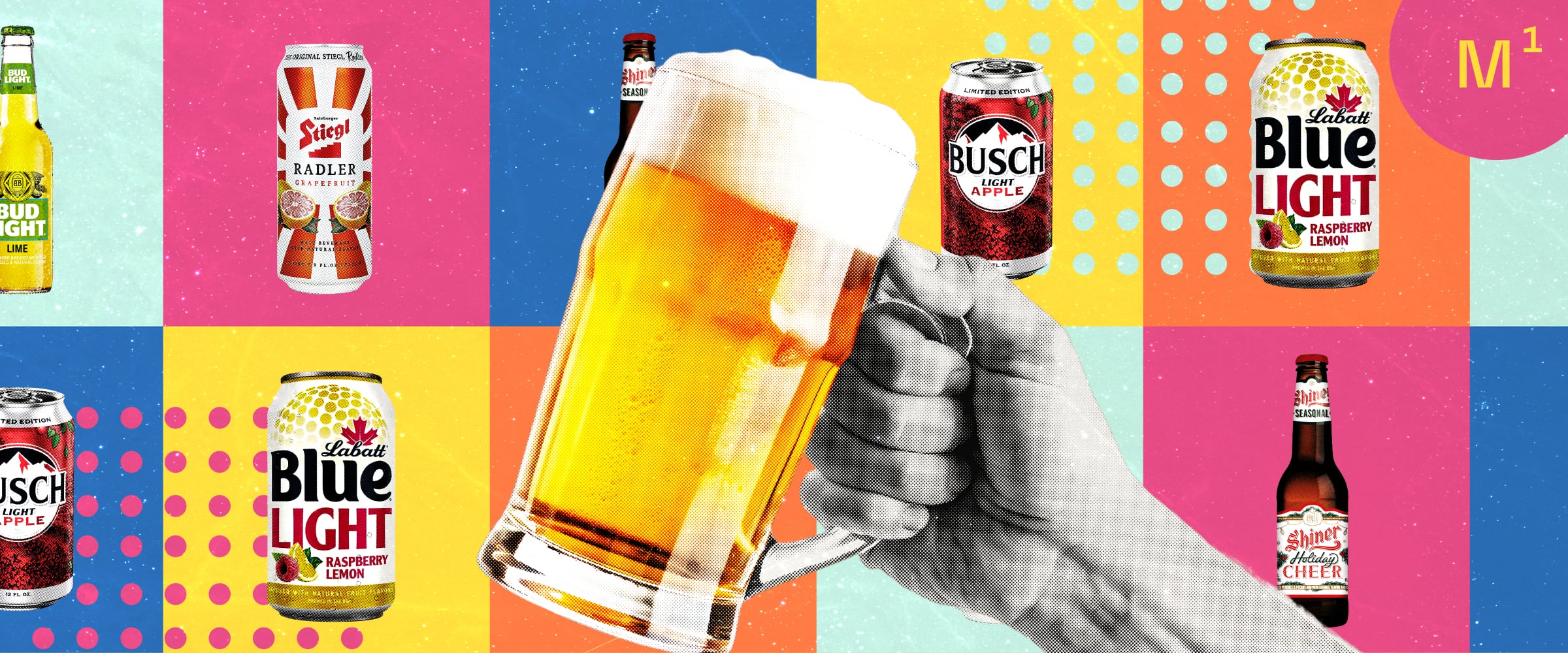
Strange Brew: The Behavioral Magic Behind Flavored Beer
When Anheuser-Busch brought back Busch Light Apple this May after a three-year absence, consumers did something remarkable. They confessed to obsession.
Across Reddit threads and Facebook groups, “Bapple” fans revealed they'd spent years chasing delivery trucks, hoarding cases in basement fridges and even attempting DIY recreations by mixing Snapple into Keystone Light. One bar owner admitted to infusing regular Busch Light with cinnamon and apple slices to satisfy desperate customers.
The cult-like devotion to Bapple reveals something big about flavored beer: it can transform a routine, everyday refreshment into a premium indulgence.
Not every new entrant or special edition succeeds, of course. But the reason isn’t always failed taste tests. Behavioral science explains why flavored brews can be so successful—a timely topic as the trend returns.
A Cyclical Trend with a Revealing History
Flavored beer isn't new. In the 1990s, Boston Beer's Cherry Wheat sparked a brief frenzy before consumers collectively asked, "Why are we drinking this?" Once recovered from the novelty, they moved on. The category retreated for two decades.
Here in 2025, flavor-forward brands of all kinds are having a moment, especially in RTDs. Alcohol sales in general are also trending downward. So, action-oriented beer brands—eager to find new consumers—are once again experimenting with ways to elevate the ordinary.
Regular beer serves a functional purpose: refreshment, social lubrication, end-of-day decompression. But a raspberry lemon beer looks, tastes and feels different and special.
This emotional shift creates something more valuable than appeal alone.
Your average beer becomes a brand worth experiencing—a source of joy consumers will seek out and pay more to appreciate.
The Flavor Factor: Creating a Premium
Because it evokes “special occasion” feelings so powerfully, flavored beer can easily establish a brand premium.
A standard light beer might cost $8-10 for a six-pack. But its distinctive raspberry lemon counterpart can command $10-12 for the same quantity. Consumers assess the value of flavored beer based on the emotional upgrade.
This premiumization strategy aligns particularly well with today’s “sober-curious” drinkers.
When 65% of Gen Z plans to drink less in 2025, the occasions to imbibe that remain become more precious. These consumers want their rare indulgences to feel worth the calories, the departure from their wellness routines, and of course, the spend.
Flavored beer fits the bill—more intentional than grabbing whatever's on sale, more special than regular beer, yet more affordable than craft cocktails. The fruit flavors signal "treat yourself" while the beer base keeps the price feeling accessible.
As a result, flavored beer brands can command premiums while attracting even those who might otherwise skip alcohol entirely. It’s the behavioral science principle of “anchoring” at work: compared to a no-frills beer with fewer emotions attached, the price for the joy feels fair.
The closer we look at successful flavored beers—both the emotions they stir and the sense of value they instill—the more we can appreciate the many behavioral principles they harness.
A journey to purchase shaped by the science of human behavior makes your flavored brew impossible to ignore.
The Behavioral Principles in the Mix
When consumers confess to chasing trucks, they're demonstrating what Method1 calls irresistibility in action.
We apply behavioral science across our work with indulgence brands, making them easier to notice and trust while giving consumers permission to choose them. The approach is proven: when a choice is cognitively easier, people are measurably more likely to make it.
Choosing brands made irresistible by behavioral science feels automatic and gratifying. Marketing bypasses consumers’ conscious consideration—which might lead to a “no”—by working with the emotional triggers and mental shortcuts that accelerate “yes.”
Here are five principles we observe driving preference and choice for flavored beer:
- The "Von Restorff effect” empowers challengers to stand out and stay memorable. In crowded liquor store or grocery aisles, distinctive products and brand assets capture our attention and embed themselves in our memories. A raspberry lemon beer looks different on the shelf. That makes it both easier to notice and harder to forget—giving it a crucial advantage over similar options.
- "Information gap theory" harnesses curiosity to drive trial. When people perceive a gap between what they know and what they want to know, it creates curiosity and a sense of deprivation. Flavored beer taps into this psychological discomfort. Its unexpected formulations motivate consumers to seek out the information they’re missing—how it tastes—through trial. Doubling down on this principle, Fuego Hard Ginger Beer creates information gaps by leveraging flavor intrigue and marketing mystique. The brand promises "Golden Hour Anytime," evoking Hollywood's fleeting window for capturing the perfect shot. Consumers have to wonder, "What flavor could capture such a vivid cinematic world?"
- "Social proof" lets other people do the selling for you. "Back by popular demand" messaging works because it provides important evidence: other people have chosen this brand, therefore it must be worth choosing. Bapple returned with stories of consumer obsession to give new buyers permission to try it. When Method1 client Cape Tide launched its hard tea, the brand built a passionate local following on Cape Cod first. New markets then saw evidence of genuine enthusiasm rather than manufactured hype. This social validation then spread far beyond the Cape—and drove production to a 5x increase.
-
The “familiarity principle” enables legacy brands to innovate with less risk.
Flavored beers from heritage brands succeed when they keep some recognizable elements while adding points of distinction. Labatt’s Blue Light Raspberry Lemon works because it builds on established Blue Light equity rather than starting from scratch. Its consumers get the comfort of a known brand while trying something new. - “Loss aversion” makes the opportunity to buy your brew feel urgent.
Scarcity makes people fear missing out on good things more than they value gaining them, and limited-time (often seasonal) releases trigger this powerful effect. When Shiner Bock brings back its Christmas peach beer annually, the indulgence feels like a special priority—with consumers feeling compelled to buy it before it disappears again.
When Backed by Science, the Weirdly Special Wins
Apple beer. Raspberry lemon lager. Christmas peach brew. On paper, these all still sound like novelties—the kind of experiments that might send brands running back to the tried-and-true.
But apple beer only seems strange until you realize what consumers are actually buying: permission to treat themselves to an emotionally-satisfying experience.
The people chasing trucks were never obsessed with apple flavoring. They were obsessed with how easy it felt to indulge in something special—a utilitarian beverage transformed into joy they could justify and savor.
That’s the real magic. Behavioral science makes the unexpected, whimsical and sometimes even bizarre feel like the irresistible choice.
To see behavioral principles in action building irresistible brands, explore Method1’s work.
Ready to
make your brand
irresistible?
